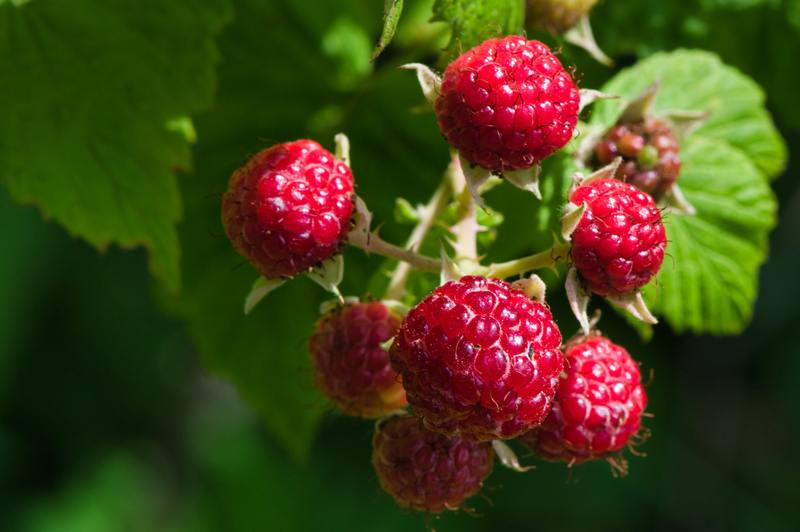Tired of seeing molds in your freshly bought raspberries? Have you always asked yourself why do raspberries mold so fast?
If you do, the simplest answer is that all the necessary elements for mold growth in raspberries are probably present in your kitchen. Read on to find out the reasons why raspberries mold quickly.

How Long Do Raspberries Last Before Getting Moldy?
Raspberries usually last for 1 day at room temperature before molds appear. If stored in the fridge, they can last up to 3 days.
Reasons Why Raspberries Mold So Fast
Molds are fungi with spores that are found almost everywhere in the environment. They grow quickly in soft fruits like raspberries because of six favorable conditions.
These six conditions are famously known in the food industry for their mnemonic FATTOM — food, acidity, time, temperature, oxygen, and moisture.
1. Food
Raspberries are rich in nutrients that molds can use as a food source for their growth. Because of their thin skin, raspberries are easily damaged exposing their flesh and juices to mold spores in the air.
2. Acidity
Molds grow in a wide range of pH. Even at an acidic pH of 3.2-3.6, the typical pH range of raspberries, molds can still propagate.
3. Time
When raspberries are left on a kitchen countertop for too long, chances are mold spores inherently in the fruits upon purchase will grow, forming a fuzzy appearance on the surface of the fruit.
4. Temperature
Molds grow best at room temperature. Raspberries left at room temperature will start to mold faster than raspberries stored in the chiller or freezer.
Immediately place raspberries in a cooler environment to delay spoilage and growth of molds.
5. Oxygen
Molds need oxygen to survive. Raspberries that are exposed to open air have more chances of getting moldy than those packaged in a container.
6. Moisture
Similar to food, molds need water for their growth and survival. Molds can adhere and grow to the surface of raspberries especially if it is moist.
At the same time, raspberries kept in a humid environment can grow molds quickly
Is It Okay to Eat Raspberries With Mold?
It is not safe to eat raspberries with molds. You should not even touch a moldy raspberry with your bare hands.
When eaten, molds can cause allergic reactions and respiratory illnesses. Also, molds produce mycotoxins, which are toxic compounds that can make you sick.
Immediately throw raspberries with visible signs of mold growth.
How Do You Keep Raspberries from Getting Moldy?
Step #1. Wash raspberries properly
After buying from the store, immediately wash the raspberries with clean running water to remove dirt that may have clung to the fruit during handling.
Discard raspberries that are damaged or spoiled. They can cause other pieces to spoil too.
Also, if the raspberries are packaged in a plastic bag or clamshell container, wash and clean them properly. You will use it again when you store the raspberries.
Step #2. Soak raspberries in a vinegar solution
In a large bowl, prepare a vinegar solution by combining 3 cups of cold water and 1 cup vinegar. You must use cold water to preserve the firmness and freshness of the raspberries.
Soak the raspberries in the vinegar solution for one minute. Make sure all surfaces of the fruit are coated.
Vinegar has antifungal properties that can kill mold spores on the surface of the fruit.
Step #3. Drain excess water
Blot dry the raspberries using clean paper towels. Make sure no excess moisture clings on the surface of the fruit.
Step #4. Place raspberries in their original container
Place the raspberries in their original container which was previously cleaned. Storing raspberries in thick airtight packaging is not recommended as it can cause the fruit to deteriorate and develop off-flavors.
Make sure to use clean kitchen utensils when handling the raspberries to avoid potential cross-contamination with mold spores.
Here is a useful article on how to remove mold from stainless steel kitchen utensils.
Step #5. Store in the refrigerator or freezer
Molds grow slower in cooler conditions. Raspberries will last for a couple more if stored in the fridge than at room temperature.
If you want the raspberries to last for months, the best option is to freeze them. Frozen raspberries can last for at least six months.
Conclusion
Now you know the answers as to why do raspberries mold so fast. It is now easier for you to keep your raspberries fresh and safe for consumption.
Check out another interesting article about why do strawberries mold and cool ways to store them. Overall, molds grow in fruits like raspberries because of factors such as food, acidity, time, temperature, oxygen, and moisture.
Therefore, ways such as proper washing, soaking in vinegar solution, draining excess water on the surface of the fruit, packing in the original container, and storing in chilled or frozen conditions can keep the raspberries from getting moldy quickly. These tips can help you extend the shelf-life of raspberries and reduce food waste brought about by their spoilage.
